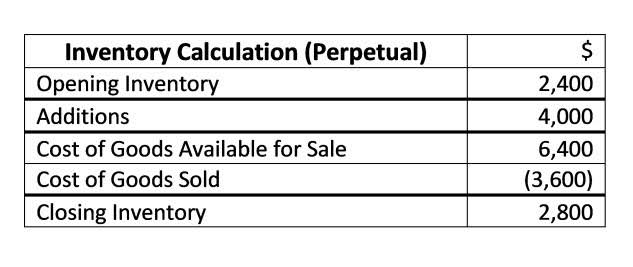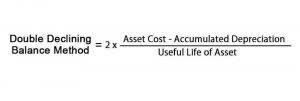A company’s retained earnings are profits reinvested in the business, indicating its growth potential and financial stability. To calculate retained earnings, subtract expenses from revenues for a given period, factoring in adjustments like stock dividends and changes in accounting policies. By comparing total equity to total assets belonging to a company, the shareholders equity ratio is thus a measure of the proportion of a company’s asset base financed via equity. The formula to calculate shareholders equity is equal to the difference between total assets and total liabilities. When a company’s shareholder equity ratio approaches 100%, it means that the company has financed almost all of its assets with equity capital instead of taking on debt. Equity capital, however, has some drawbacks in comparison with debt financing.
Stockholders’ Equity vs. Market Value
- However, buying back these shares can reduce a company’s paid-in capital and overall equity, while selling them can increase both.
- To compute total liabilities for this equity formula, add the current liabilities such as accounts payable and short-term debts and long-term liabilities such as bonds payable and notes.
- If the value of all assets exceeds the value of all liabilities, the equity is positive and indicates a thriving business.
- Profits contribute to retained earnings, while losses reduce shareholders’ equity via the retained earnings account.
A Statement of Stockholders’ Equity is a required financial document issued by a company as part of its balance sheet that reports changes in the value of stockholders’ equity in a company during a year. The statement provides shareholders with a summary view of how the company is doing. It’s also used by outside parties such as lenders who want to know if the company is maintaining minimum equity levels and meeting its debt obligations.
How to Calculate Shareholders’ Equity
For this reason, many investors view companies with negative shareholder equity as risky or unsafe investments. Shareholder equity alone is not a definitive indicator of a company’s financial health. Retained earnings are part of shareholder equity and are the percentage of net earnings that were not paid to shareholders as dividends. Think of retained earnings as savings since it represents a cumulative total of profits that have been saved and put aside or retained for future use. Retained earnings grow larger over time as the company continues to reinvest a portion of its income. To compute total liabilities for this equity formula, add the current liabilities such as accounts payable and short-term debts and long-term liabilities such as bonds payable and notes.
How to Calculate Stockholders’ Equity for a Balance Sheet
Since equity accounts for total assets and total liabilities, cash and cash equivalents would only represent a small piece of a company’s financial picture. The fundamental accounting equation is assets equalling the sum of liabilities and equity. This equation is the basis for the balance sheet, which summarizes a company’s financial position at a specific point in time. In all of the examples we’ve discussed in this article, the basis of calculating that equity was rooted in this accounting equation. Retained earnings are part of the stockholders’ equity equation because they reflect profits earned and held onto by the company.
Why Is Company Equity Important?
- Initially, at a corporation’s foundation, the amount of stockholders’ equity reflects how much co-owners or investors have contributed to the company in form of direct investments.
- As per the formula above, you’ll need to find the total assets and total liabilities to determine the value of a company’s equity.
- Each industry has its own standard or normal level of shareholders’ equity to assets.
- Retained earnings are part of shareholder equity and are the percentage of net earnings that were not paid to shareholders as dividends.
Essentially, retained earnings represent the amount of company profits, net of dividends, that have been reinvested back into the company. A balance sheet lists the company’s total assets and total liabilities for the most recent period. Unlike public corporations, private companies do not need to report financials nor disclose financial statements. Nevertheless, the owners and private shareholders in such a company can still compute the firm’s equity position using the same formula and method as with a public one.
- This is cause for concern because it marks the value of a company after investors and stockholders have been paid.
- A firm reports the components and total owner’s equity in quarterly or yearly filings.
- Investors hope their equity contributions can be paid back to them through dividends and/or increase in shareholder value.
- When a company’s shareholder equity ratio approaches 100%, it means that the company has financed almost all of its assets with equity capital instead of taking on debt.
- However, this change was offset by a substantial increase in total liabilities, from $380,000 to $481,000.
Share Capital
Total liabilities are the sum of all balance-sheet liabilities, both current and fixed (long-term). Accounts payable, taxes payable, bonds payable, leases, and pension obligations are all included. If the value is negative, the company does not have enough assets to cover all its liabilities, which investors frequently regard as a red flag. Microsoft https://businesstribuneonline.com/navigating-financial-growth-leveraging-bookkeeping-and-accounting-services-for-startups/ purchased Nuance Communications in 2022 for $19.7 billion, acquiring their conversational AI and cloud-based clinical intelligence services for healthcare providers. Microsoft paid $56 per share in an all-cash transaction, partly because of Nuance’s strong balance sheet with a stockholders’ equity of $1.6 billion as of Sept. 30, 2021.
From the viewpoint of shareholders, treasury stock is a discretionary decision made by management to indirectly compensate equity holders. This tells you that ABC Widgets has financed 75% of its assets with shareholder equity, meaning that only 25% is funded by debt. Looking at the same period one year earlier, we can see that the year-over-year (YOY) change in equity was an increase of $9.5 billion. The balance sheet shows this decrease is due to a decrease in assets, but a larger decrease in liabilities. For example, a company may have shareholder equity of $1 million as of the first quarter and then issue new shares during the second quarter, raising shareholder equity to $1.5 million.
How does stockholders’ equity work?
This strength reduces the company’s risk of insolvency and allows for potential investments in profitable projects. Retained earnings are reinvested in the business, not distributed as dividends, allowing for long-term accounting services for startups returns. Shareholders’ equity represents the net worth of a company, which is the dollar amount that would be returned to shareholders if a company’s total assets were liquidated, and all of its debts were repaid.
What is the main purpose of the stockholders’ equity statement?
Investors usually seek out equity investments as it provides a greater opportunity to share in the profits and growth of a firm. Stockholders’ equity is the value of a firm’s assets after all liabilities are https://fintedex.com/navigating-financial-growth-leveraging-bookkeeping-and-accounting-services-for-startups/ subtracted. It’s also known as owners’ equity, shareholders’ equity, or a company’s book value. You might think of it as how much a company would have left over in assets if business ceased immediately.



